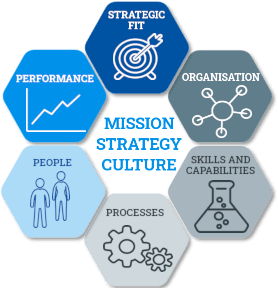Defining Innovation part 3: How to build your own definition
In previous articles, we looked at why it’s important that your company has a clear definition of innovation and why getting one is not as simple as copying it from the internet. Now we look at how you can build your own definition, one that will be customised to your business and that will help you drive innovation performance.
Building YOUR definition
Even if I don’t advise just picking up a literature definition of “innovation”, you can use the literature as a source of inspiration to build your own version.
But before we get to that, there are a few steps to go through first.
You should be very clear about the role that innovation plays in the overall business strategy, which domains the company should innovate in and the value innovation is expected to deliver over the strategic period. Clarity on these elements will help you build the right definition of innovation for your company. All these topics plus building your definition of innovation are part of the Strategic Fit dimension of the Six Dimensions Framework.
Once you have anchored innovation in the business strategy you can use the innovation literature as raw material to for building your definition. The essential steps are:
- Collect a range of definitions, covering a variety of the different innovation viewpoints (for examples, refer to the table in the previous article). This is where internet and literature sources are useful.
- Systematically take each type of innovation and evaluate whether this should be included in your definition of innovation.
- Structure, combine, rank and filter the innovation types, keeping on the the most relevant an important ones. Using a matrix can be useful at this stage – often the form of innovation objects vs degree of innovation.
- Clarify as much as possible the definitions of the innovation types you have retained. For example, if you include product innovation, what exactly do you consider an “innovative product”? If you include radical innovation in a business process, you need to define “radical” and be specific about the business process you will target.
- Clarify also the key topics that are excluded from innovation. This will help people understand the boundary between what is and is not innovation.
The following resources can be useful to help you structure your definition:
- The OECD approach (Oslo Manual, 4th ed. Chapter 3). A recently-simplified structure, well documented and used widely. Contains some guidance on novelty.
- Doblin’s 10 types are detailed and comprehensive with good documentation.
- Greg Satell’s Innovation Matrix structures innovation in a 2×2 matrix of clarity of Problem and clarity of Domain.
- Architectural innovation is another 2×2 matrix that structures innovation by the changes to core components of a system and changes to the links between them.
Tips
- Make it relevant to your business – use examples
- The goal is clarity, not detail. Keep it simple.
- To avoid misunderstandings, avoid ambiguous jargon. Both in the resulting output and as you build your definition – keep checking terms and definitions as you work though the steps..
- Involve a range of people in building the definition. This will help start the sharing process.
- Remember, your innovation can have a mix of approaches. For example, it’s fine to include incremental product innovation and radical innovation in customer engagement if that’s right for your company.
- Clearly state what is not innovation too – for example, is basic product renovation included?
Summing it up…
Unless you have taken the time to build a collective view on what “innovation” means in your company, different people will probably have different ideas about what “innovation” is. This ambiguity will ultimately reduce the ability of your company to innovate. You can overcome this by using the wealth of available information on the web as raw material to build a customised definition, based on the needs and strategy of your company.
One advantage of this method is that it can help you consider new ways of innovating. For many companies “innovation” is essentially “new product development”. While nothing is wrong with that, there could be other areas where the company can innovate. Using this approach can result in a wider definition, offering more possibilities to create value through innovation.
…and rolling it out
In the first article in this series I stated that “…if you want to drive innovation performance effectively, the definition of “innovation” needs to be (a) clear and (b) shared across the organisation.” In these articles we’ve been concentrating on the first point – getting a clear definition. But sharing it across the company and ensuring that it is meaningful to all employees is as important. There’s no use having a great definition that stays in a report, locked in a cupboard. The definition is a tool that needs to be used every day and because innovation is a team game, it needs to be used well by people across the organisation.
So once you have your definition, ensure that you also implement a rollout plan that informs, trains and engages everyone. That way, when somebody in your company says “innovation”, everybody will know what it means.
Want to know more?








